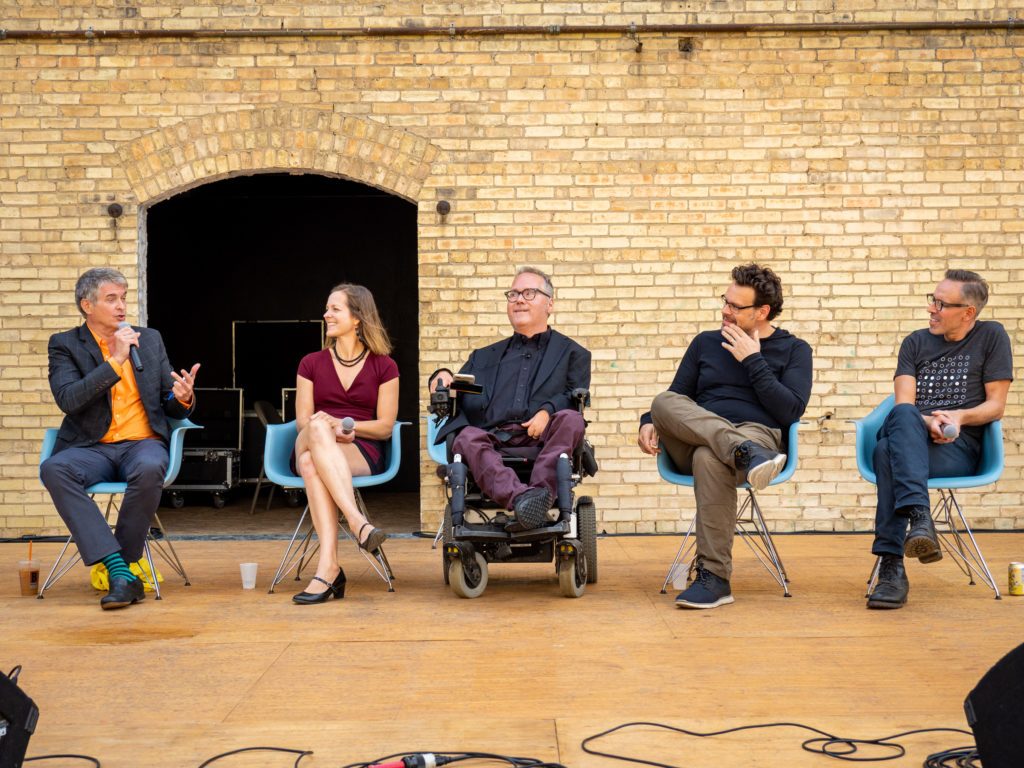ArtPrize’s “Project 1” Public Exhibitions in Grand Rapids, Michigan
Artists engage with not only the city but also generations of residents

In Grand Rapids, Michigan, ArtPrize has debuted a new initiative called Project 1—on now through 27 October. Working with the community through the filter of art, invited artists engage not only the city but also generations, from grandparents to toddlers. This was the case during the opening weekend when artists Amanda Browder, Heather Hart, Rafael Lozano-Hemmer, Olalekan Jeyifous and collaborative duo Paul Amenta & Ted Lott of SiTE:LAB debuted new interactive projects across the city. This year’s Crossed Lines exhibition (organized in part by ArtPrize artistic director Kevin Buist) allows for interfacing with architecture through constructing structures of the artist’s own or engaging with pre-existing forms. As such, a citywide art show forms, making these stunning creations accessible for everybody.

Amanda Browder typically works with the community where she’s been commissioned and makes extremely large-scale fabric conglomerates. For Project 1, she invited locals to not only donate fabric, but also to get their hands dirty by sitting at the sewing machine. Under Browder’s direction, they collectively sewed together enough fabric to cover three walkways in Downtown Grand Rapids and a former gym at Martin Luther King Jr Park. The results prove colorful and otherworldly, transforming architecture into something warm, familiar and nostalgic.

For her installation at Project 1, Heather Hart, constructed two seemingly buried houses she calls “The Oracle of the Soulmates.” One is located centrally in Rosa Parks Circle in downtown Grand Rapids, while the other is in MLK Park. The structures are completely accessible and visitors are invited to climb onto the shingled roofs and enter into what would be the house’s attic. Hart wants visitors to participate, claiming the space as their own while also commenting on the sinking meaning surrounding the word “home.”

Olalekan Jeyifous contributes a totem of sorts across from Rosa Parks Circle. The work emulates a skyscraper and, upon closer inspection, is broken down into three sections referencing the housing crisis and racial discrimination in Grand Rapids. While the work has a sturdy and strong presence, the message remains hidden at first glance—provoking the viewer to look and think a little deeper.

With a strong interest in technology, Rafael Lozano-Hemmer’s installation “Voice Bridge,” finds itself on the well-traversed Blue Bridge, which connects the east and west sections of Downtown Grand Rapids. The project invites passersby to have their voice recorded through an intercom and played back, resulting in a succession of voices that are audible across the stretch of the bridge. Each sound correlates with a light, so this piece is best viewed at night. Uncensored, it gives the public the opportunity to be heard, literally and figuratively on an unlikely stage.

SiTE:LAB duo Paul Amenta and Ted Lott lend the most controversial project. The two built an accessible stage for ongoing programming to be held for the duration of Project 1. While not contentious in concept, controversy arose when the owner of the property upon which they built decided that he didn’t approve of their debut show: a performance by DRAG SYNDROME, a London-based drag collective made up of performers with Down Syndrome. This garnered plenty of attention and ultimately the performance went ahead—though not at the SiTE:LAB stage. Luckily, Amenta and Lott were able to use the venue for a public conversation hosted by DisArt, an organization that raises awareness for artists with disabilities.
Images courtesy of ArtPrize












